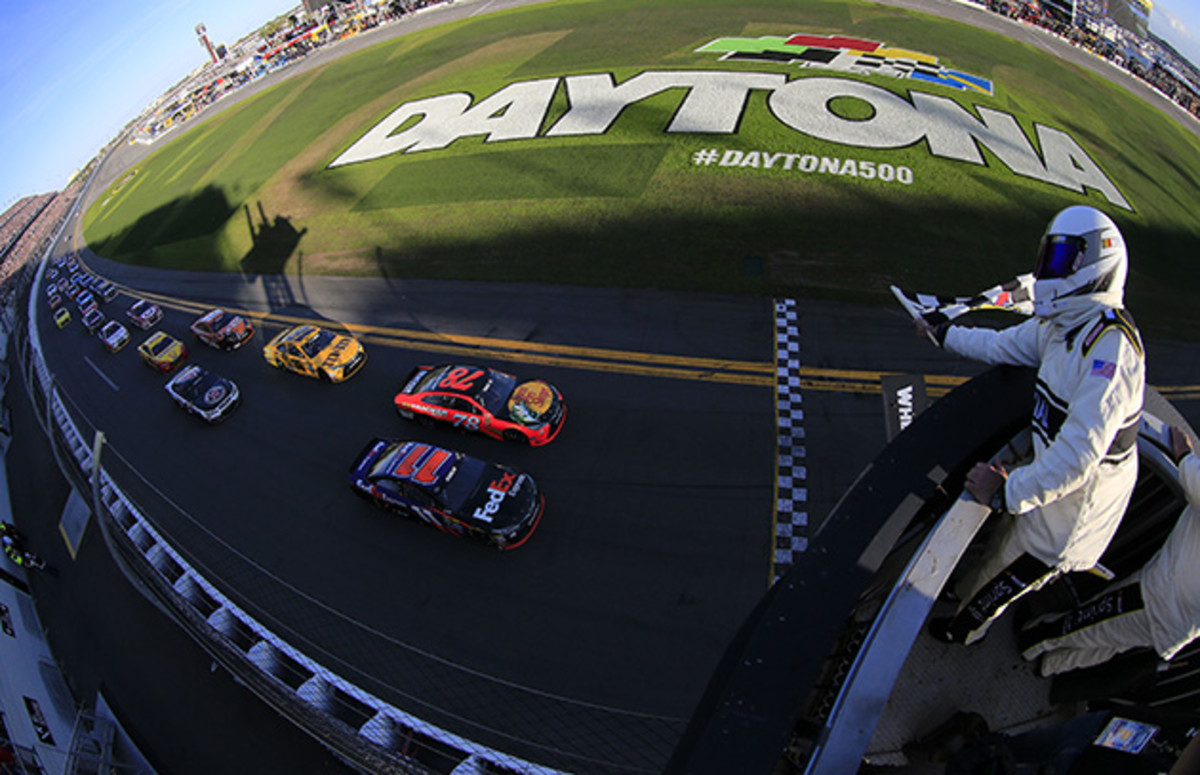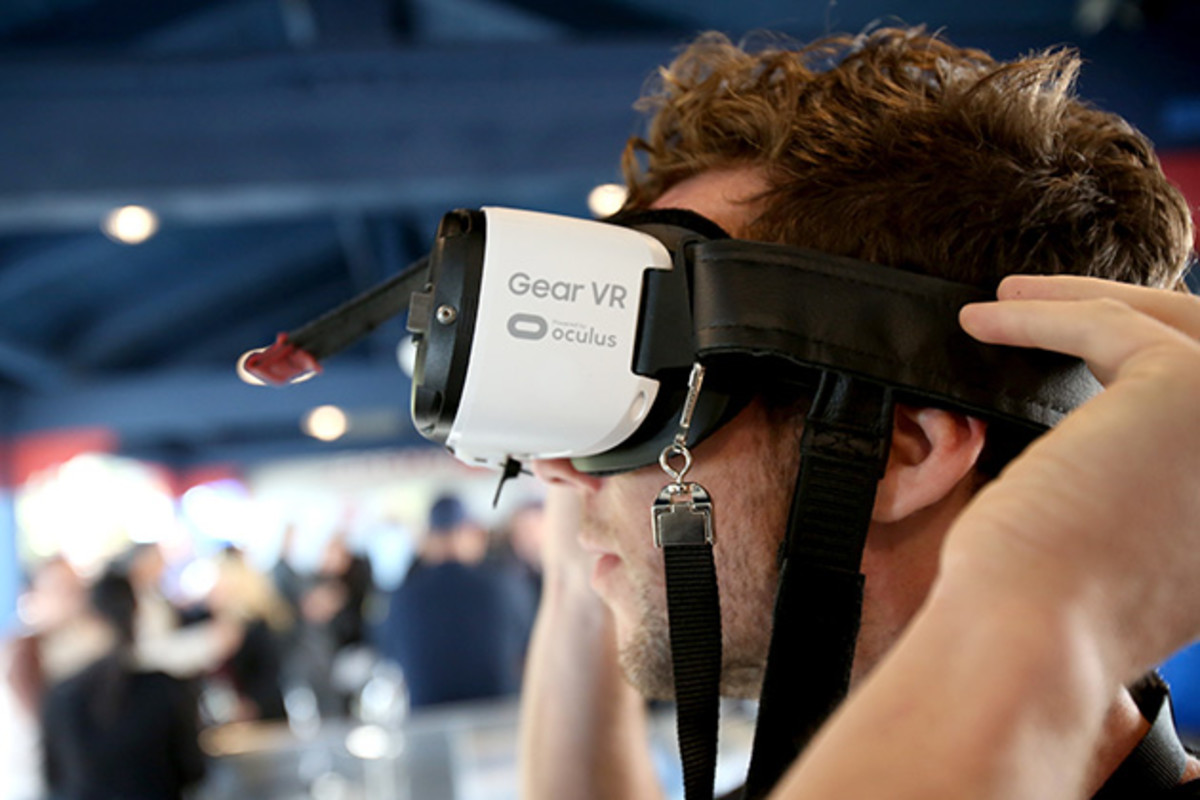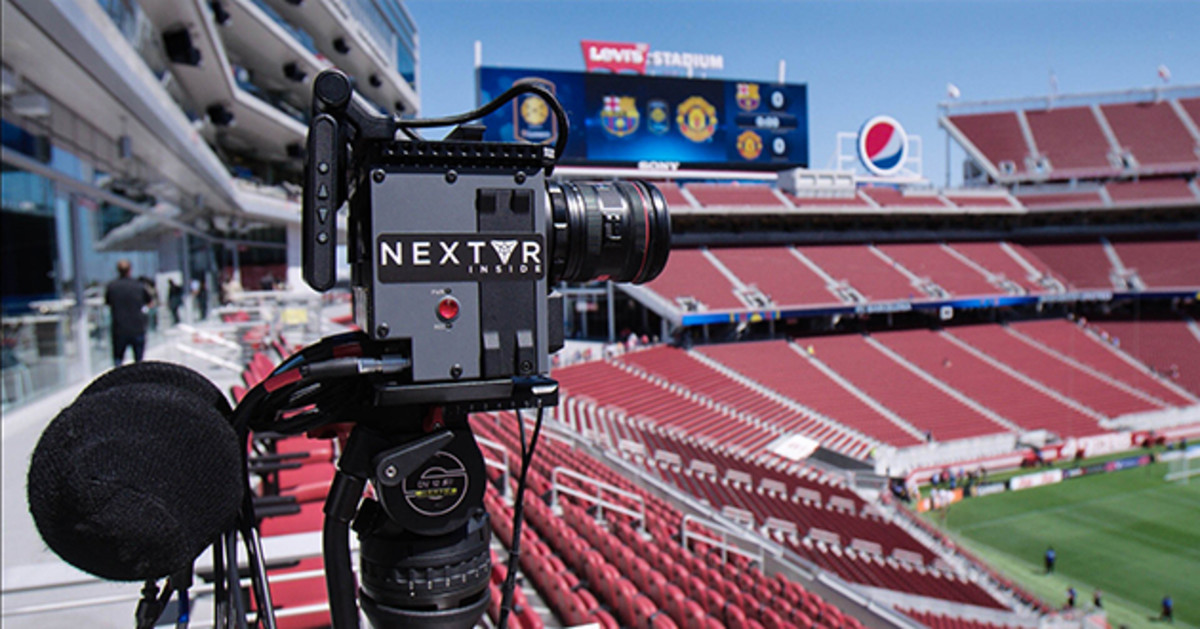Get in the game: Virtual reality could be the future of live sports coverage

The V-8 stock cars roared around Turn 1 at Daytona International Speedway, streaks of buzzing color mere inches from my face. Trying to catch an un-blurred glimpse of just one of the 40 racecars I jerked my head from left to right. Then they were gone, disappearing around Turn 2 and out onto the Daytona Superstretch. I pushed the Samsung Gear VR headset up, my eyes refocusing onto my room 2,400 miles and three time zones away in a quiet suburb in the San Francisco Bay Area. This was the Daytona 500, live, but in virtual reality. If NextVR, the company behind the VR broadcast of the race, has its way, this might also be the future of how we watch sports.
According to David Cramer, senior VP of corporate strategy at NextVR, the company has already worked with just about every sport. The technology was demoed to golf fans visiting VIP tents at last summer’s U.S. Open, used to livestream the NBA champion Golden State Warriors’ opening night game against the New Orleans Pelicans in October, and to screen three Premier Boxing Champions fights in January. This weekend Amen Corner at the Masters will be on NextVR, and later this year matches from the International Champions Cup soccer tournament will be available, too. In February FOX Sports and NextVR also announced a five-year partnership to broadcast live sports.

Right now the broadcasts are only viewable through the Gear VR, a headset that turns a Samsung smartphone into a VR device. But NextVR is planning to integrate other VR systems into its platform later this year. Soon all that owners of high-end Android phones running on the Qualcomm Snapdragon 820 processor will need to experience NextVR streams is a $15 cardboard box—the creatively named Google Cardboard VR headset.
The rigs used to film the action use pairs of high-resolution cameras arrayed in either a semicircle for 180-degree shots, or a circle for full 360 degrees. Pairing the cameras allows the system to capture 3D in the same way that humans do with two eyes. The shots from each pair are then merged together with computers.
• MORE EDGE: The science behind Steph Curry's top-tier aim
“We’re able to recreate a 3D geometry of the world where our cameras exist, and we’re able to take the video then and map that to that geometric model,” Cramer says. “You feel like you’re in a virtual facsimile of the actual environment.”

Unlike in computer games, viewers in the NextVR world can’t get up and move around because the camera rigs are fixed. In essence that means that NextVR recreates being in a specific seat rather than roaming the stadium, but a consequence of this is that the experience can be less disorientating. When users are able to move around virtual environments, the disconnect between the visual perception of movement and the body’s sensation of movement can cause dizziness and nausea.
Examining the future of virtual reality and the impact it will have on football
About a year ago, when Cramer, a self-confessed consumer tech gadget freak, first had the chance to experience NextVR’s system, he was dazzled by virtual courtside seats at an NBA game and field-level views of an EPL match. Then he was shown a full 360-degree panorama from the top of the Golden Gate Bridge. He pushed back from the conference table, freaked out by the all-too-real feeling of being perched on the edge, hundreds of feet above the stormy waters of the Pacific Ocean.
On Sunday, Feb. 21, 2016, the view from high up in the grandstands above the start/finish line at Daytona felt like the loading screen of a video game: overly vibrant colors, a landscape hazily fading away into the horizon, even a computer generated FOX Sports badge occasionally projected into the air above the racetrack. But there was detail where there should never have been detail. The crowd in the stands wasn’t a repeated arrangement of computer sprites, but thousands of unique individuals who moved the way real people move. Flags waved from motorhomes parked in the infield, wisps of trash randomly spiraled across the pavement, floating in the turbulent air stirred up by the speeding cars.

These little things, inconsequential to the action or result of the race, gave the disconcerting feeling of actually being there. Freed from the 2D TV view, you could actually look around and explore your environment. According to Cramer, finding ways to reinforce the sensation of being present is key to making the illusion work. That includes not just the 3D imagery, but 3D sounds, too. “The audio is a really big component in selling that idea of presence and immersion in the content,” he says.
But impressive as NextVR might be, it still doesn’t quite offer full believability. In part that might be because the technology isn’t yet perfect. Looking at a smartphone through the lenses of the Gear VR you can see the screen in close up, which means you can see the individual pixels. The virtual world looks like reality seen through a fine-meshed fabric. As the speeding cars raced by they occasionally flickered and skipped, belying their virtual status.
Virtual reality can also be a lonely place: Immersed in another world, you are cut off from, well, actual reality. You can’t turn and chat face-to-face with others who might be watching the game with you. You can’t eat or drink, or at least you can’t see whatever it is that you might be eating or drinking. And you can’t reach for the augmented reality of your smartphone, pulling up stats or messaging friends and family. For many of us 21st century citizens, that disconnection from Google and Twitter is disconcerting.
The SI Extra Newsletter Get the best of Sports Illustrated delivered right to your inbox
Subscribe
The Daytona stream inadvertently raised the question of exactly where VR fits in the media landscape. The feed was curated, switching between four camera positions around the track. Although viewers could look around within each view, they had no choice about if or when to switch positions. At best those jumps traded breaking the spell of being trackside with the guarantee of following the action, at worst they risked cutting away and missing the action. As Denny Hamlin and Martin Truex Jr. raced toward the checkered flag, the NextVR feed switched to a shot of Turn 1 and missed their photo finish entirely.
As the technology and teething wrinkles are ironed out, VR streams will certainly become more common, but virtual reality, and NextVR, won’t replace the ambience of really being there, or the detailed analysis of a meticulously produced broadcast feed. It will almost certainly be a piece of how we experience live sports in the near future, but still only a piece.
